Physical Address
304 North Cardinal St.
Dorchester Center, MA 02124
Reduction and fixation should be performed for all fractures that cannot be reduced with closed methods or for those that remain unstable with loss of reduction after successful closed reduction.
Fractures with angulation more than 10 degrees or shortening greater than 2 mm and significantly comminuted fractures are best treated with reduction and fixation. Fractures with any rotational deformity or fingers that cross over each other with attempted finger flexion must be reduced and fixed to preserve normal hand function.
Rigid internal fixation is becoming an increasingly common option for fractures as opposed to percutaneous pinning, given the possibility of early active range of motion postoperatively. Nevertheless, because the extensor tendons are bound intimately around the phalanges, the exposure of the bone and hardware placement will cause tendon adhesions that limit digit motion. Plates and screws are used when the phalangeal bones are so comminuted that percutaneous Kirschner wires (K-wires) will not be able to achieve adequate reduction.
Percutaneous pinning enables quick fixation of simple fractures and avoids the need for the dissection and periosteal stripping required for internal fixation.
In complex traumatic injuries where multiple digits require fixation, such as multidigit amputation, pinning can provide quick stabilization, permitting time-sensitive microsurgery to proceed efficiently.
Avoid rigid internal fixation in patients with soft-tissue defects that cannot be covered at the time of surgery because hardware infection is likely. Percutaneous fixation would be preferred in this scenario because pins can be removed readily if needed.
Note any rotational or angular deformity of the finger. This can be a subtle finding and will be more easily noticed when evaluating the fingertip posture by comparing the alignment of the fingernails ( Fig. 9.1 ).
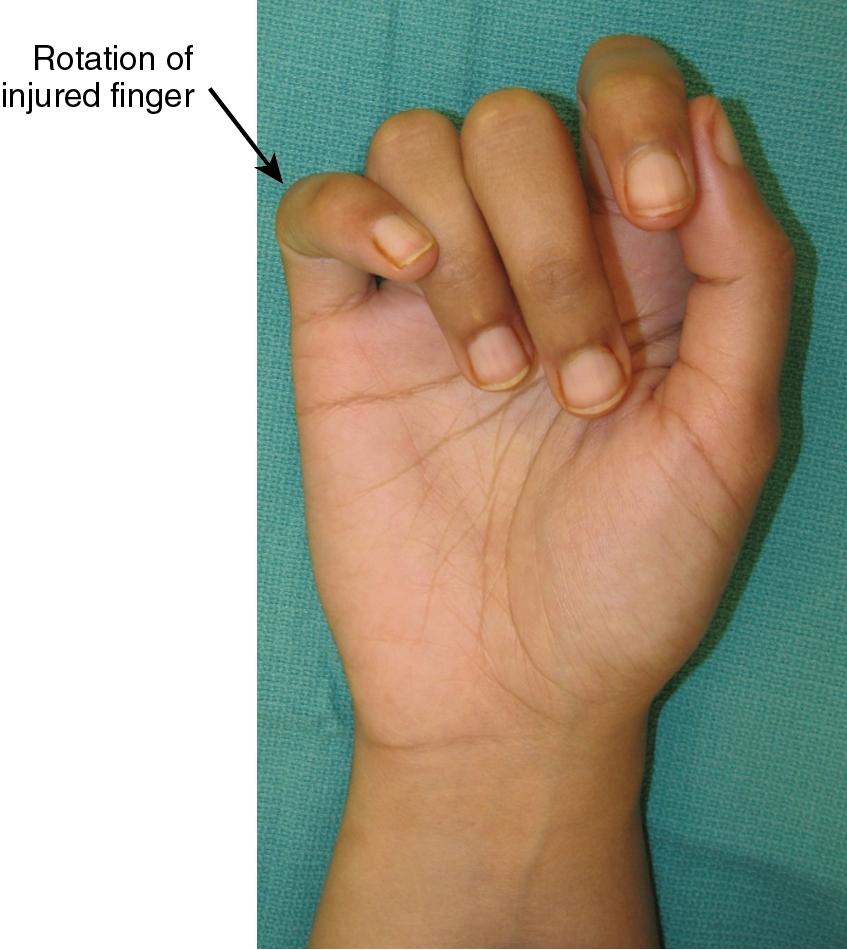
Depending on the location of the fracture, a complex balance between flexion and extension forces throughout the digit will determine the deforming force.
Fractures of the proximal phalanx will often have an apex volar displacement pattern because the interossei muscles pull the proximal fragment into flexion and the central slip pulls the distal fragment into extension.
Fractures of the middle phalanx will displace in an apex volar direction when the fracture is distal to the flexor digitorum superficialis (FDS) insertion or in an apex dorsal direction when the fracture is proximal to the FDS insertion ( Fig. 9.2A–B ).
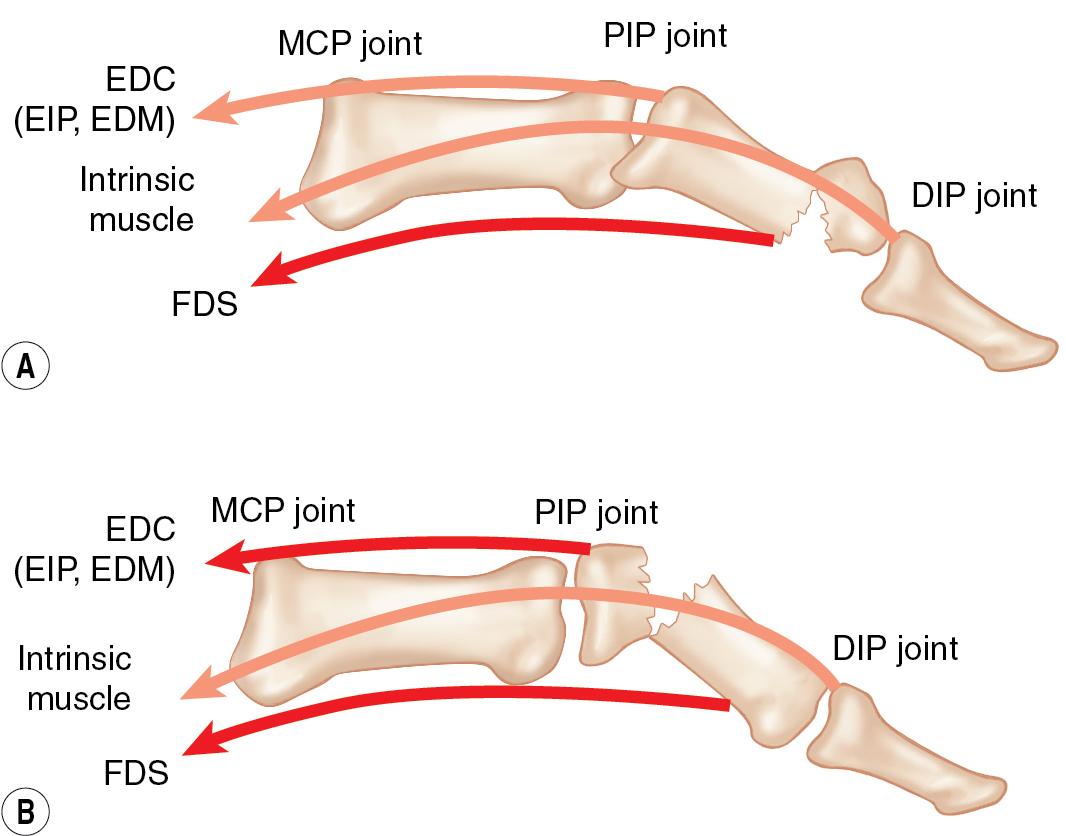
Open fractures will require thorough debridement and careful assessment of the soft tissue injury, with repair of structures as indicated.
The extensor mechanism incorporates both longitudinal and transverse components, covering most of the dorsal and lateral sides of the digit.
The central slip inserts at the dorsal base of the middle phalanx and serves to extend the proximal interphalangeal (PIP) joint.
The lateral bands are formed at the sides of the finger, with extensions projecting off the common extensor tendon proximal to the central slip and additional contributions from the interosseous muscles and lumbricals (radial side only). They reconverge distally to form the terminal tendon, which inserts at the dorsal epiphysis of the distal phalanx ( Fig. 9.5 ).
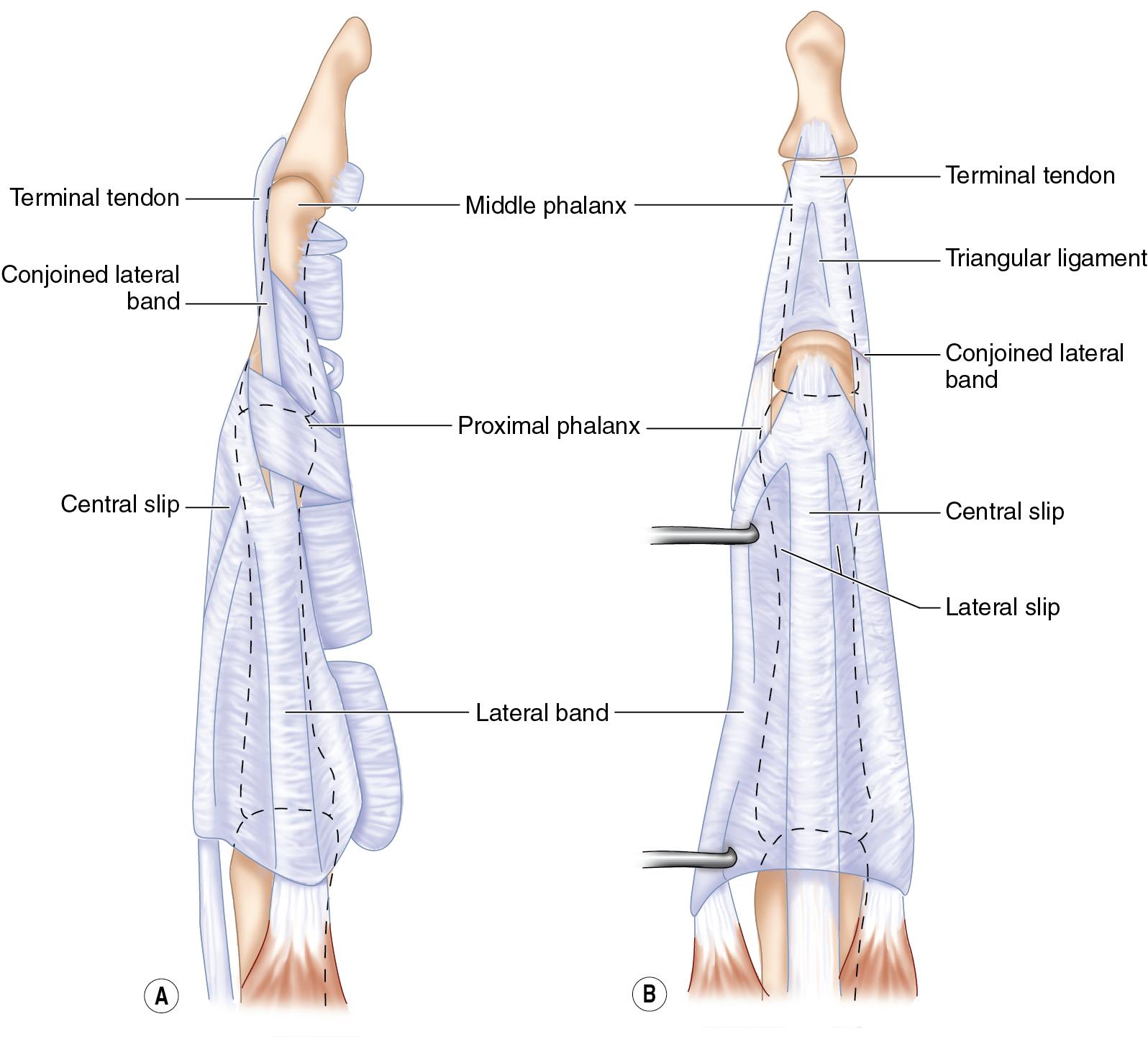
When placing internal fixation, dorsal, dorsolateral, or midaxial incisions may be used for proximal and middle phalangeal fractures.
The interval between lateral band and central slip may be incised; this does not require repair at closure ( Fig. 9.6 ).
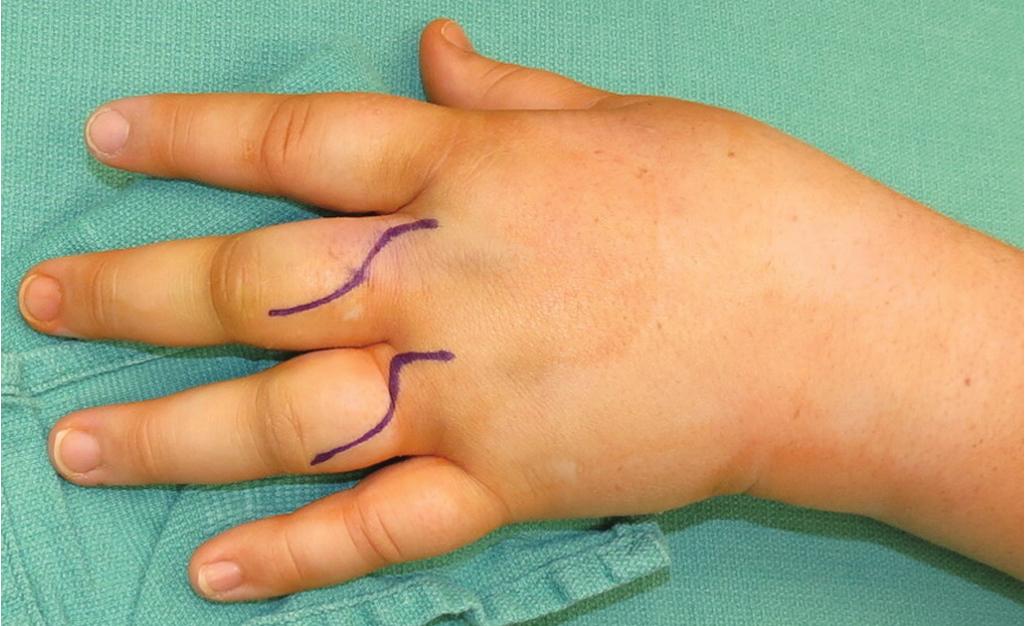
The extensor tendon may be split longitudinally at the midline (middorsal) over the proximal phalanx; long splits should be repaired at time of closure.
With a lateral approach, the transverse retinacular ligament is divided to provide access; this does not require repair at closure.
Over the middle phalanx, the triangular ligament can be incised longitudinally to provide access between the two lateral bands.
Deep to the extensor mechanism, the periosteum is incised and stripped minimally to expose the fracture site ( Fig. 9.7 ).
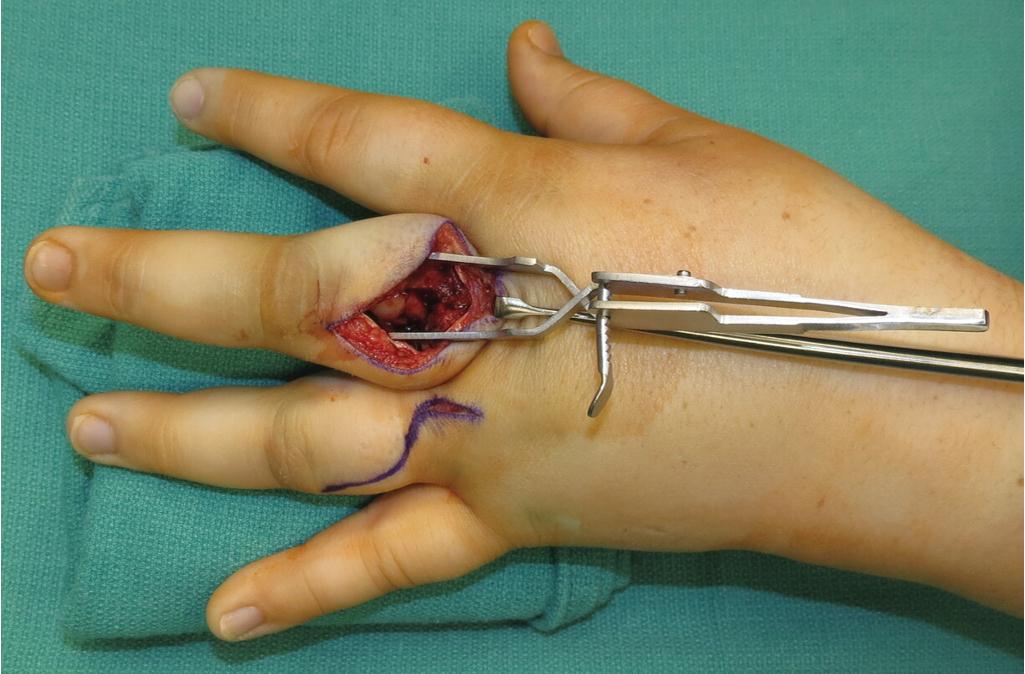
Divisions of thin, transverse fibers of the extensor mechanism, such as the interval between lateral band and central slip, or the transverse retinacular ligament, do not require repair.
A small portion of the sagittal band may also be divided for exposure, but major disruptions should be repaired to prevent displacement of the extensor tendon with metacarpophalangeal flexion.
Extensive longitudinal splits in the extensor tendon should be repaired at closure.
At the base of the middle phalanx, be mindful of protecting the central slip insertion to the periosteum during tendon splitting.
Likewise, take care to protect the very thin, flat terminal tendon as it inserts onto the dorsal base of the distal phalanx.
Become a Clinical Tree membership for Full access and enjoy Unlimited articles
If you are a member. Log in here